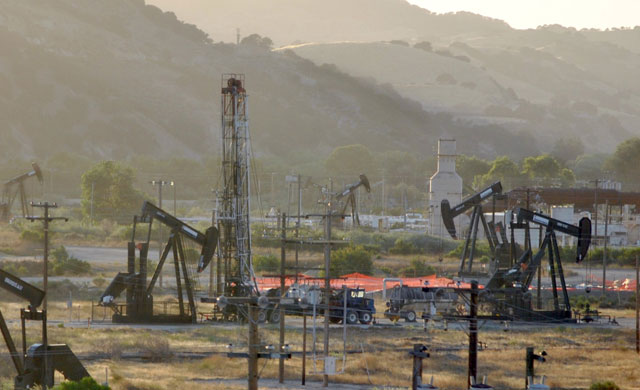2023 proved to be a confounding year for commodities following a stellar performance in 2021 and 2022. Despite expectations of further outperformance against a backdrop of growing geopolitical tensions and Europe’s need for gas over the winter months, commodities struggled to build momentum. 2024, however, appears to be a different story altogether.

Crucially, the geopolitical landscape failed to carry the market impact that investors had expected. Because of a largely mild European winter in 2022/23, there were few pressures on the gas market. Meanwhile, trade flows adjusted well to the sanctions and bans related to Russia’s war in Ukraine.
Another key factor influencing commodities in 2023 was China’s economic hardships. Owing to a difficult post-pandemic recovery, the nation’s real estate industry struggled as well as many other areas of the economy in a way that impacted industry nationwide.
In the US, the outperformance of the dollar and a hawkish Federal Reserve monetary policy hindered commodities. Likewise, Wall Street blossomed off the back of a generative AI boom that saw more institutional investors explore the burgeoning tech scene as a priority throughout the year.
It appears that these headwinds could be set to clear for 2024, and with economies struggling with geopolitical tensions and the pursuit of sustainable post-pandemic growth, we may see more institutions move back into commodities in the coming months.
In its 2024 Commodities Outlook, ING suggested that “fundamentals for most commodities range from neutral to mildly bullish,” and early indications in Q1 2024 appear to suggest this thesis.
“Expectations that the US Federal Reserve will reverse policy tightening and start to cut interest rates next year, along with a weaker USD should also provide some tailwinds to commodities,” the report suggested. “However, there are clear demand risks given expectations for softer global growth next year.”
Optimism and Volatility Ahead
While ING strikes a tone of cautious optimism, JPMorgan suggests that the outlook for institutional interest in commodities may be more volatile than traditional securities, especially if leverage is involved.
“The value of commodity-linked derivative instruments may be affected by changes in overall market movements, commodity index volatility, changes in interest rates, or factors affecting a particular industry or commodity, such as drought, floods, weather, livestock disease, embargoes, tariffs and international economic, political and regulatory developments,” warned JPMorgan’s Global Investment Strategy Team. “Use of leveraged commodity-linked derivatives creates an opportunity for increased return but, at the same time, creates the possibility for greater loss.”
If we can be certain of anything in the post-pandemic landscape, it’s that volatility is never too far from threatening global markets. Geopolitical unpredictability has steered the outperformance and underperformance of commodities in 2022 and 2023 respectively, and actively continues to do so in 2024.
This indicates that institutions that have the power to build forecasts based on available and emerging data can be more capable of reaping the rewards of the 2024 commodities market.
With prime brokers having sought to gain more volume through increased hedging by retail brokers in 2023, we may see the months ahead bring a greater emphasis from institutions to refocus these cost-effective liquidity solutions into opportunities within commodity markets.
Although ING and JPMorgan’s outlooks for commodities in 2024 are fundamentally different, early signs suggest that both hypotheses have merit, and may underline the opportunities abound for institutional investors.
Short-Term Opportunities in Oil
The outlook for petroleum in 2024 is similarly open to interpretation. While bearish cases focus on expectations of weakening global economies as the year progresses, bulls look more to supply-side initiatives set to maintain the market’s performance away from its 2023 deficits.
Owing to production cuts by OPEC+ nations, greater discipline from US shale producers, and the cessation in US government releases from the Strategic Petroleum Reserve, institutions may find greater value in oil prices with more positive upside to come.
So far, geopolitical conflicts have prompted a rise in oil prices, and March saw Brent Oil climb to $83/bbl off the back of a Ukrainian attack on Russian refineries.
While this certainly makes the case for greater volatility in the future, Brent’s growth of more than 10% in Q1 2024 suggests that geopolitics may once again fuel institutional appetites for oil over the coming months.
Weakening Economies Offer New Frontiers for Metals
The value of gold reached a record value of $2,141 per troy ounce in March, and economic uncertainty was an underlying factor in the precious metal’s growth.
While gold has made for an inconsistent inflation hedge in the past, it’s still a popular option when investors look to diversify away from weakening economic conditions domestically.
One of the biggest drivers of many of gold’s recent rallies has been Chinese investors seeking to find a safe haven as domestic markets continue their decline.
“The gold market hasn’t been driven by Western investors,” explained Bernard Dahdah, commodity analyst at Natixis. “China, so far this year and through last year has been the engine behind gold prices — but not necessarily behind this spike.”
Gold’s outperformance in March stems from uncertainty over the US Federal Reserve’s plans to cut interest rates as inflation continues to confound expectations.
The recent spike also coincided with a recent flare-up in the conflict in Palestine, illustrating the truly global motivations for buying precious metals.
Elsewhere, metals like copper can also be an attractive proposition for institutions, and recent news of China’s plans to cut output saw the base metal rise to seven-month highs.
China is likely to have the final say on the performance of copper in 2024, and a lack of momentum in the property sector could undermine demand over the year. However, tighter inventories point to some potential upside.
Geopolitical Uncertainty Could be a Bullish Scenario
The underlying theme for 2024 will invariably be geopolitical uncertainty. Along with global conflicts, we’re set for a close-run US presidential election that could heavily impact Wall Street and other global markets.
For institutions seeking opportunities amid the uncertainty, there’s certainly a bullish case to be made for commodities, and while many economies are set to feel the pinch of slower growth outside the US, inflation still threatens to undermine the United States’ performance over the year ahead.
As a result, commodity index products can be an excellent portfolio diversification tool and hedge against both global conflict and inflation that Q1 2024 suggests is ready to perform immediately.

 Hot Features
Hot Features











